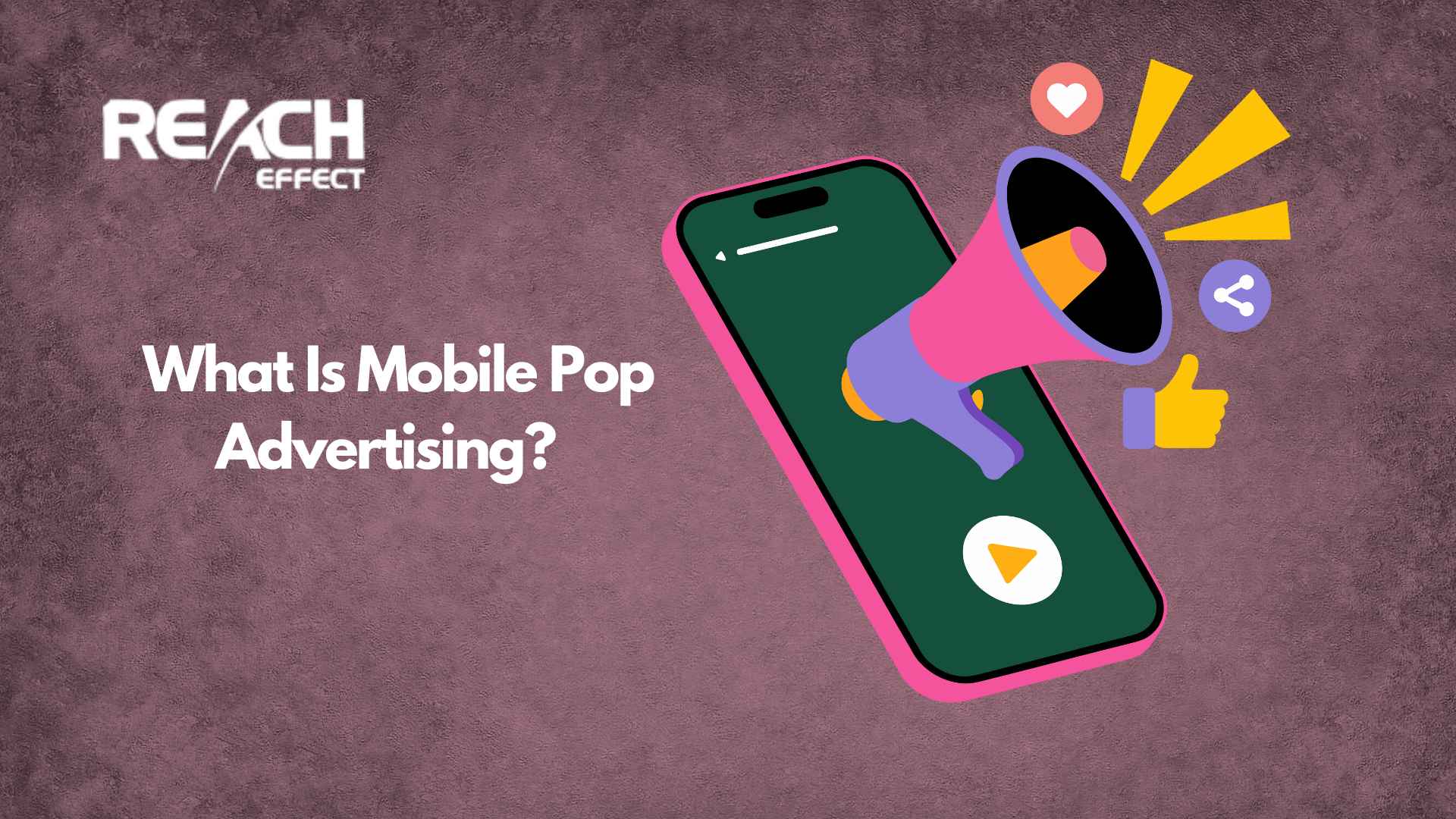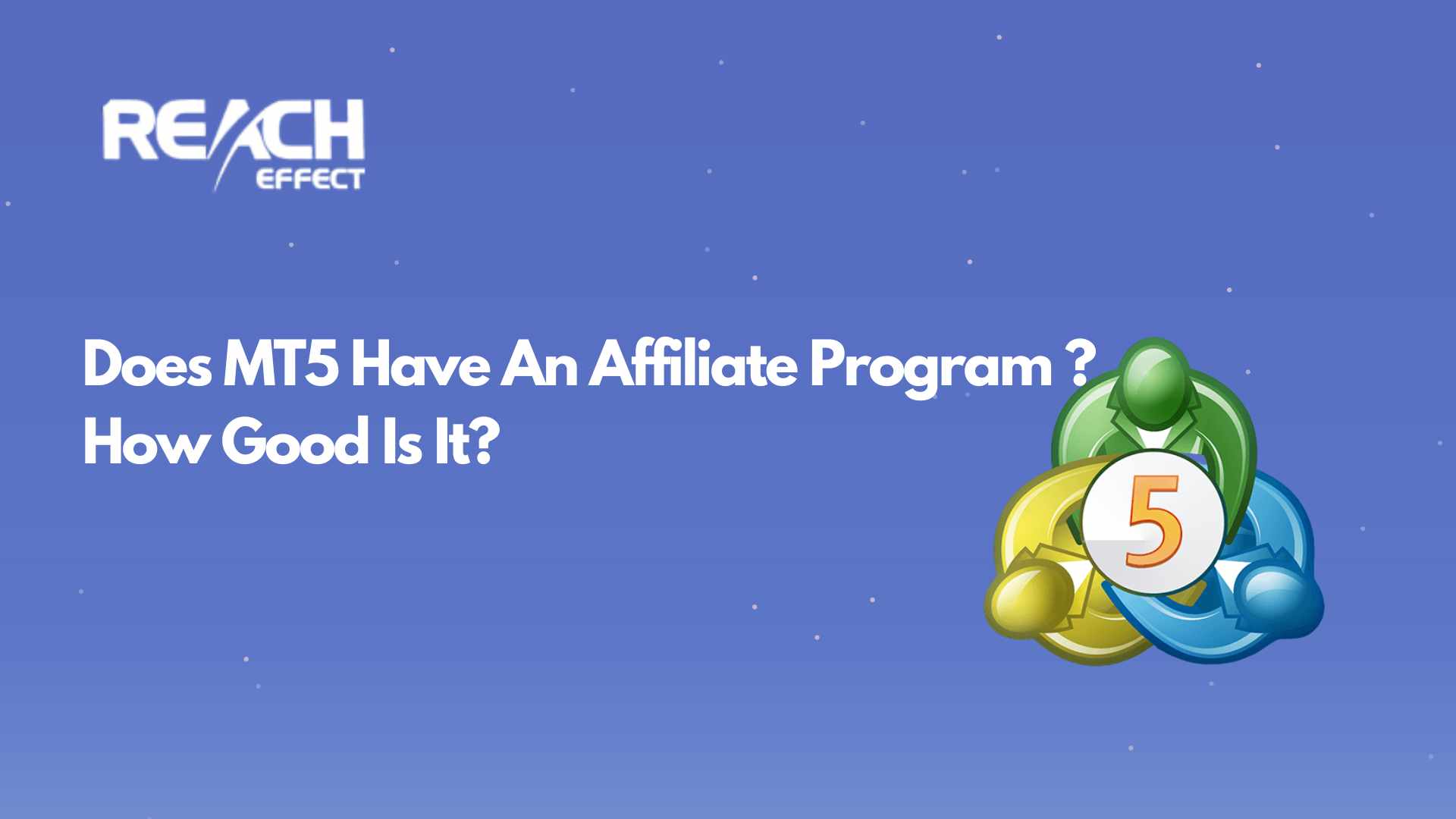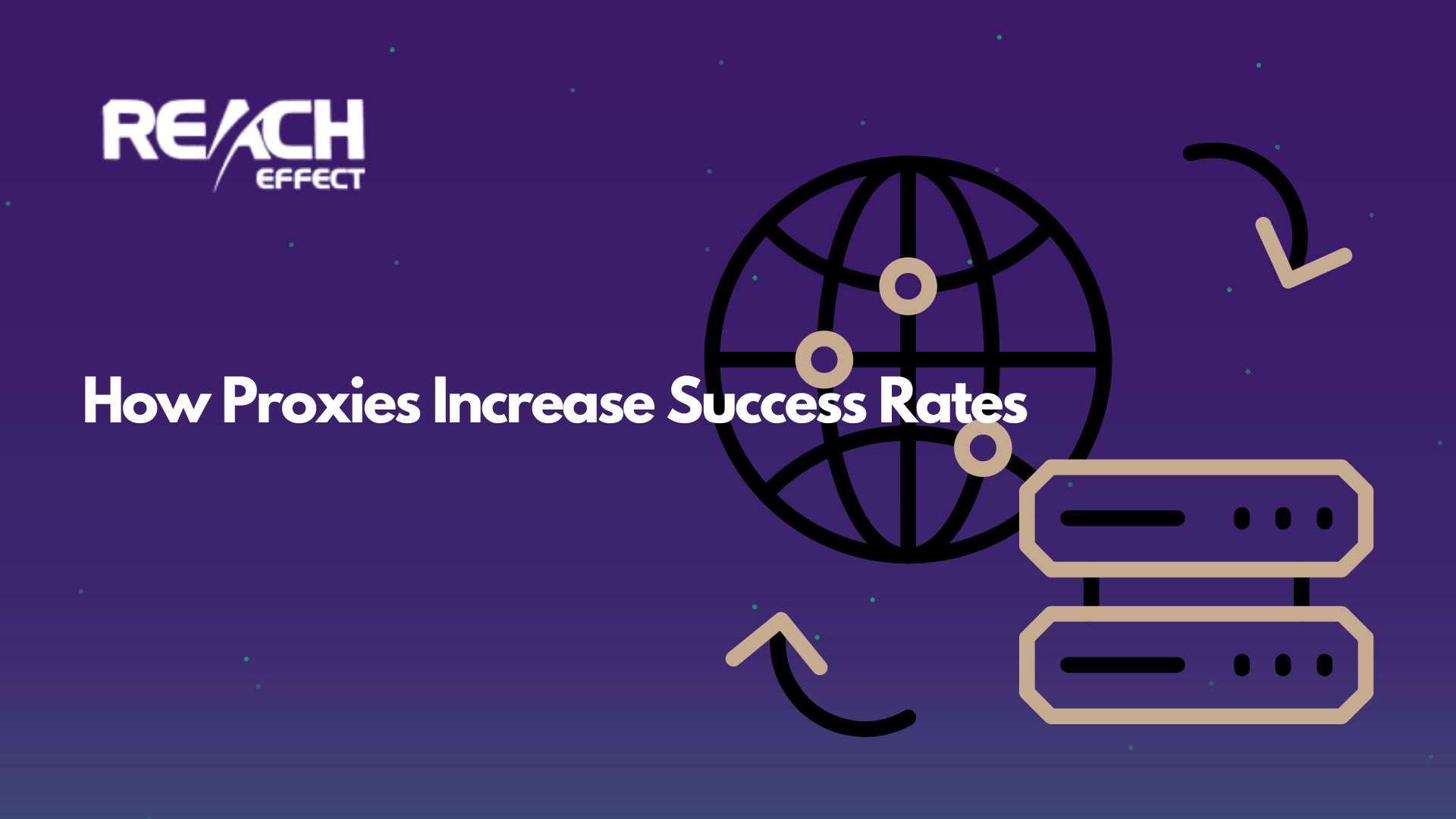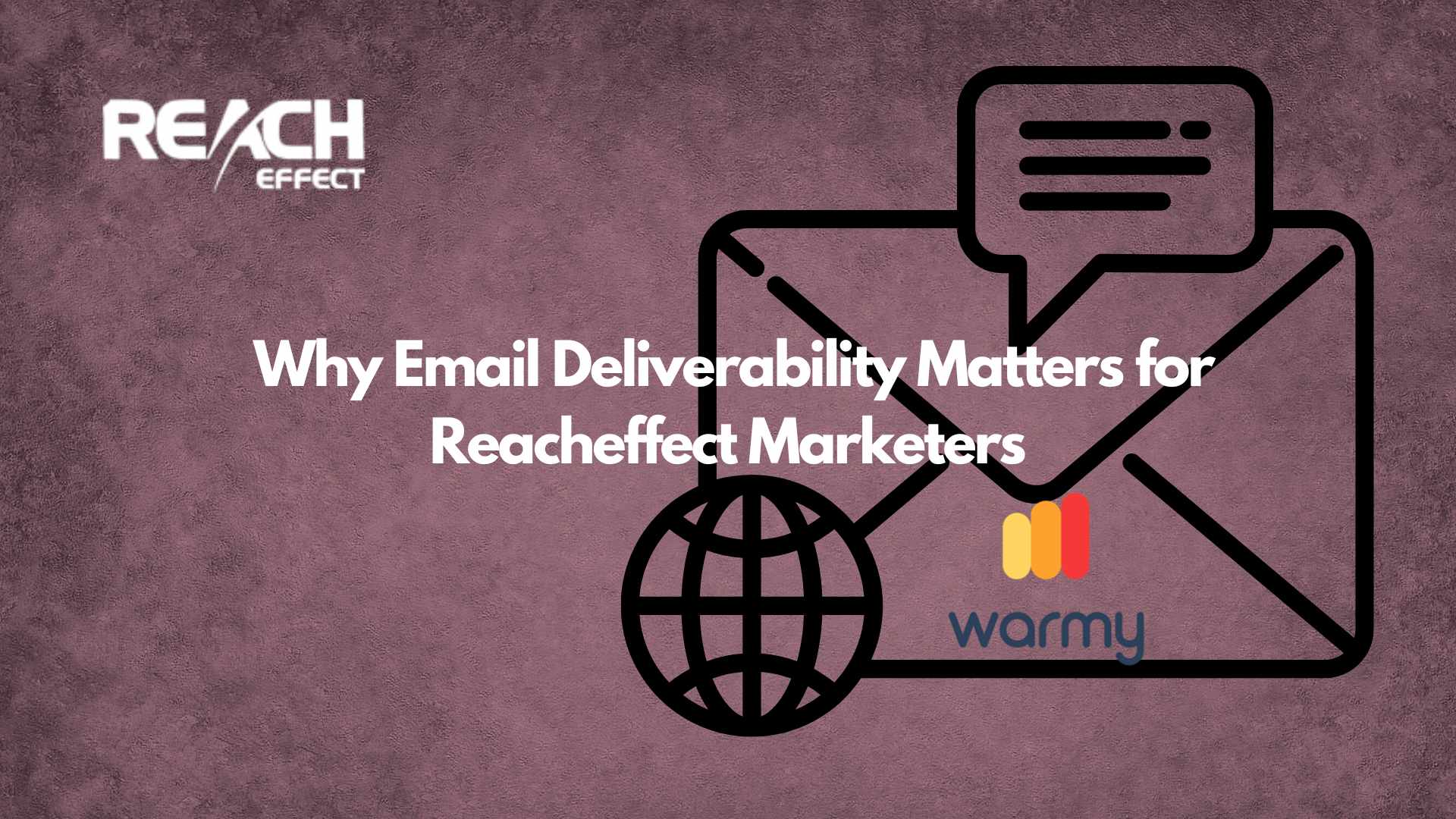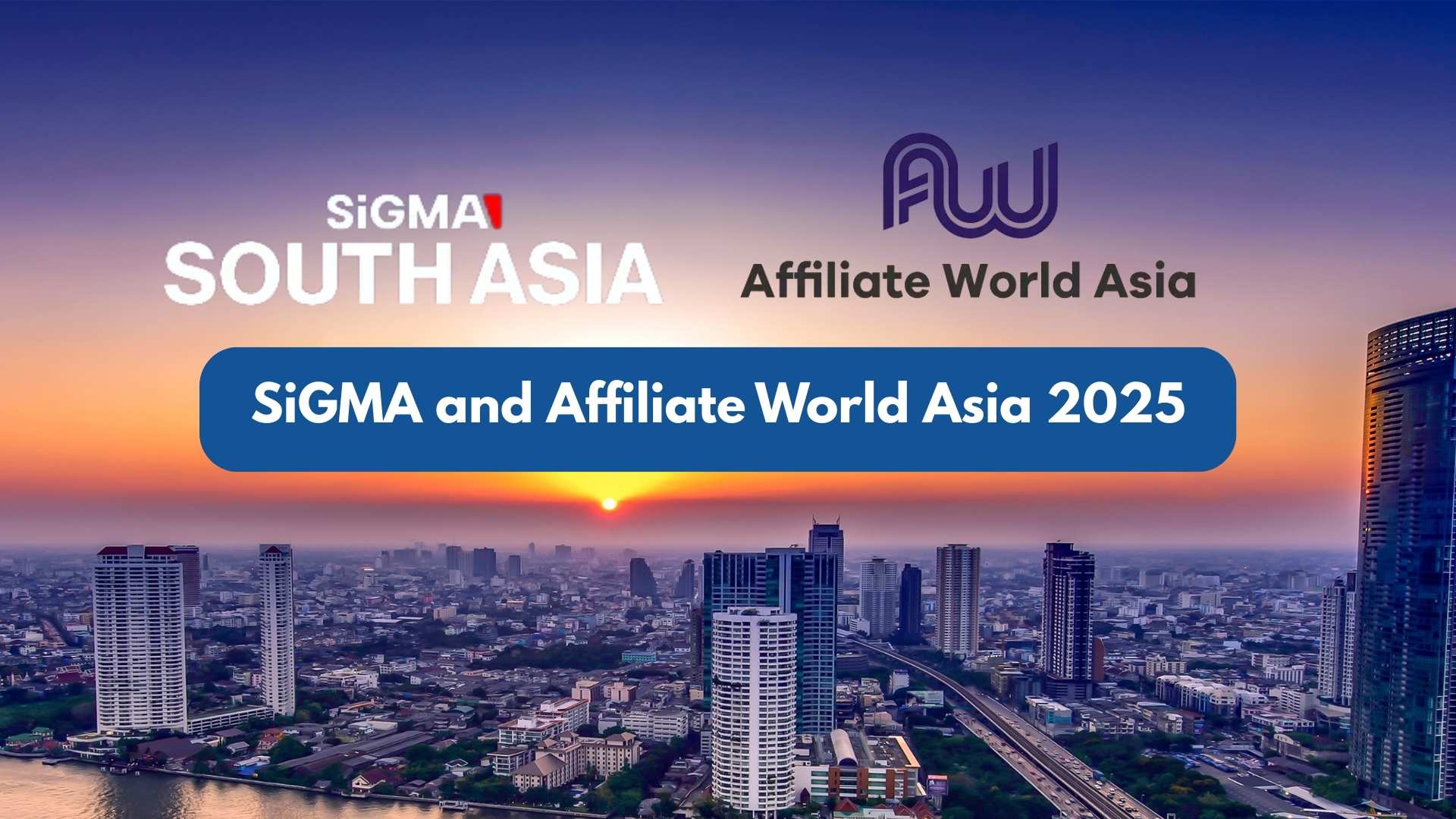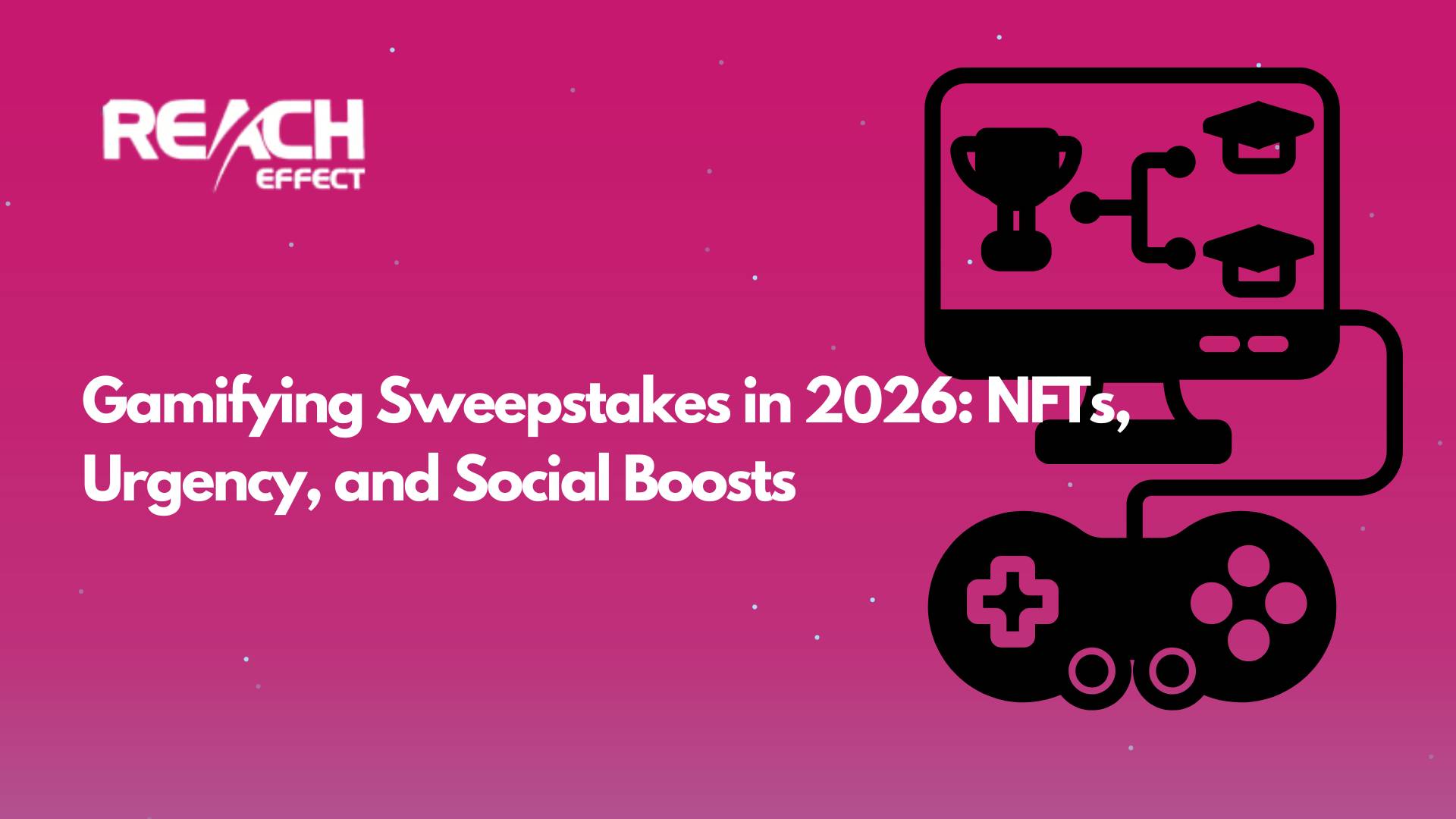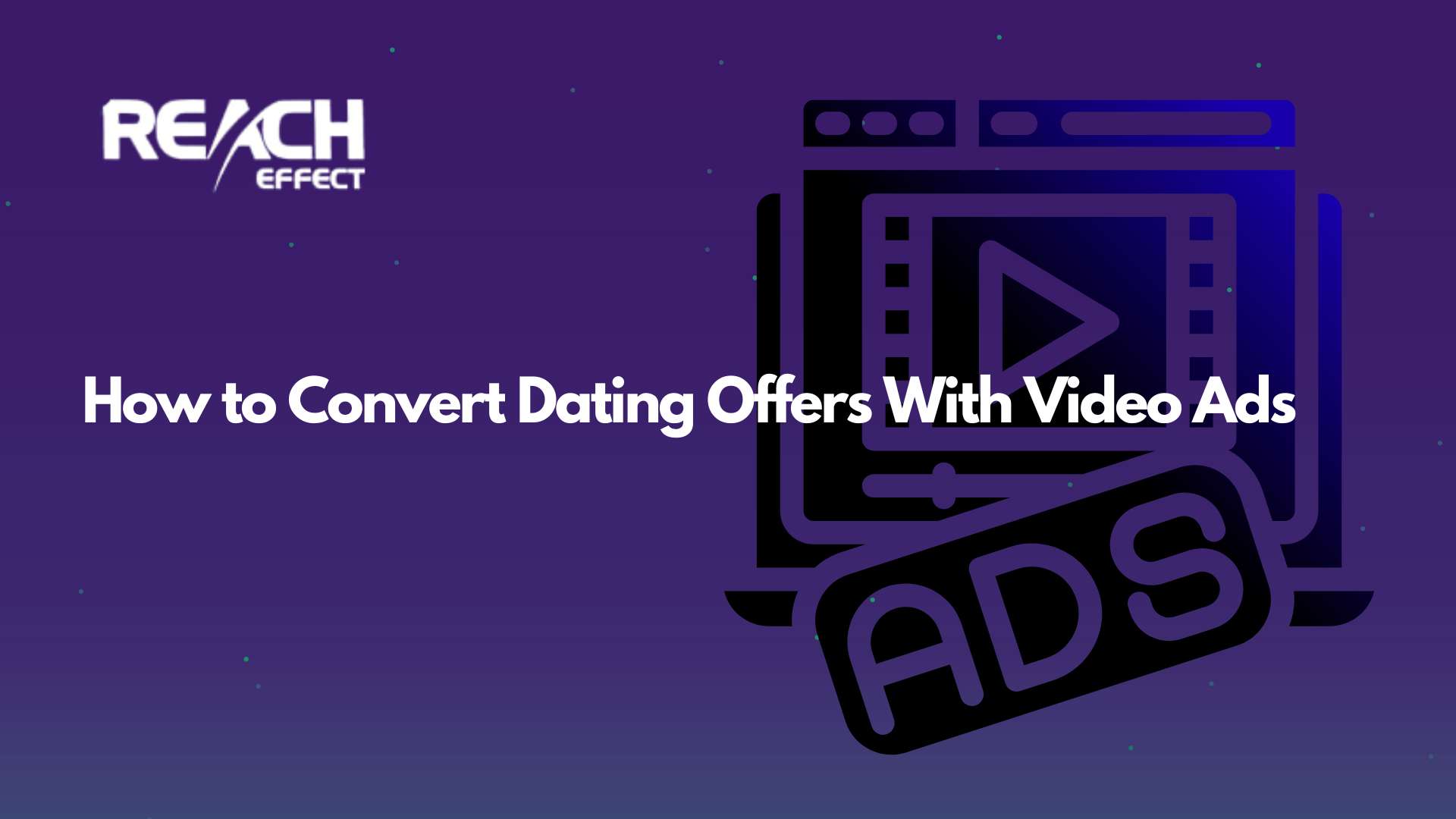The shopping season between November 11 (Chinese Singles Day) and November 29 (Black Friday) has become the most profitable period in digital retail. With Singles Day generating an estimated $202 billion in sales and Black Friday reaching $74.4 billion globally in 2024, the stakes for publishers have never been higher. But here’s the question that keeps many publishers up at night: which ad format actually delivers the best results during these peak shopping events?
Thank you for reading this post, don't forget to subscribe!I’ve spent years working with publishers who scramble every year to optimize their monetization strategy for these events. The choice between native ads and pop ads isn’t just about personal preference anymore. It’s about understanding which format matches your audience behavior, your traffic quality, and your revenue goals during the most intense shopping days of the year.
Why Singles Day and Black Friday Matter More Than Ever
Before we dive into the ad format comparison, let’s look at what makes these shopping events so critical for publishers in 2024.
Singles Day started as an anti-Valentine’s Day celebration in Chinese universities during the 1990s. Fast forward to 2024, and it generated over 26.6% year-over-year growth, with more than 532 million shoppers participating across major platforms. What’s interesting is that Singles Day now spans from mid-October through November 11, giving publishers nearly a month of elevated traffic to monetize.
Black Friday continues to evolve beyond its one-day origins. The 2024 data shows that 87.3 million Americans shopped online during Black Friday alone, with mobile devices accounting for 69% of all purchases. Online sales hit $10.8 billion in the United States and $74.4 billion globally, representing a solid 5% increase from 2023.
For publishers, these numbers translate into unprecedented traffic spikes. Your regular audience multiplies as bargain hunters, gift shoppers, and impulse buyers flood content sites looking for deals, product reviews, and shopping guides. The challenge is converting this traffic surge into maximum revenue without destroying the user experience.
Understanding Native Ads for Shopping Events
Native advertising has become the sophisticated choice for publishers who want their monetization to feel seamless. These ads blend into your content, matching the look and feel of your editorial flow.
How Native Ads Perform During Peak Shopping
The performance data for native ads reveals some compelling numbers. Average click-through rates for native ads sit at 0.38% on mobile and 0.16% on desktop, which significantly outperforms traditional banner ads at 0.11%. During high-intent shopping periods like Singles Day and Black Friday, these numbers can climb even higher.
What makes native ads particularly effective during shopping events is their ability to capture users in a discovery mindset. Someone reading an article about holiday gift ideas is already primed for shopping suggestions. A well-placed native ad for a relevant product or deal feels like a natural extension of their research process.
The Strengths of Native Advertising
Seamless User Experience
Native ads don’t interrupt the browsing flow. During Singles Day and Black Friday, when users are actively seeking information about deals and products, native ads provide value rather than annoyance. A user reading “Top 10 Tech Gifts for 2024” won’t mind seeing a native ad for discounted electronics from a retailer.
Higher Engagement Metrics
Beyond click-through rates, native ads excel at engagement depth. Users who click on native ads tend to spend more time on the landing page and scroll deeper into content. For affiliate offers or e-commerce promotions during shopping events, this translates into better conversion potential.
Research shows that native advertising campaigns running longer than six months have 36.4% lower average cost per click, and beauty category native ads achieve the highest CTR at 0.104%. During shopping events, categories like electronics, fashion, and home goods see similar engagement spikes.
Mobile Optimization
With 70% of Black Friday orders coming from mobile devices globally, native ads have a distinct advantage. They naturally adapt to mobile screens without feeling cramped or intrusive. The mobile CTR premium for native ads means you’re optimizing for the dominant traffic source during these shopping events.
Advertise With The Reacheffect Ad Network
Get TrafficThe Limitations of Native Ads
Lower Volume Potential
Native ads work within your content structure, which means you can only place so many before the user experience degrades. During traffic spikes, you might feel like you’re leaving money on the table because your inventory is limited by your content layout.
Requires Quality Content
Native ads perform best alongside quality editorial content. If your site relies heavily on thin content or aggregated material, native ads won’t blend as effectively. Publishers need strong content strategies to make native advertising work optimally.
Variable Performance by Category
Not all verticals perform equally with native ads. While beauty, travel, and technology content sees strong native ad engagement, some niches struggle. If your site covers industrial goods or highly technical B2B content, your native ad CTR might be three times worse than average.
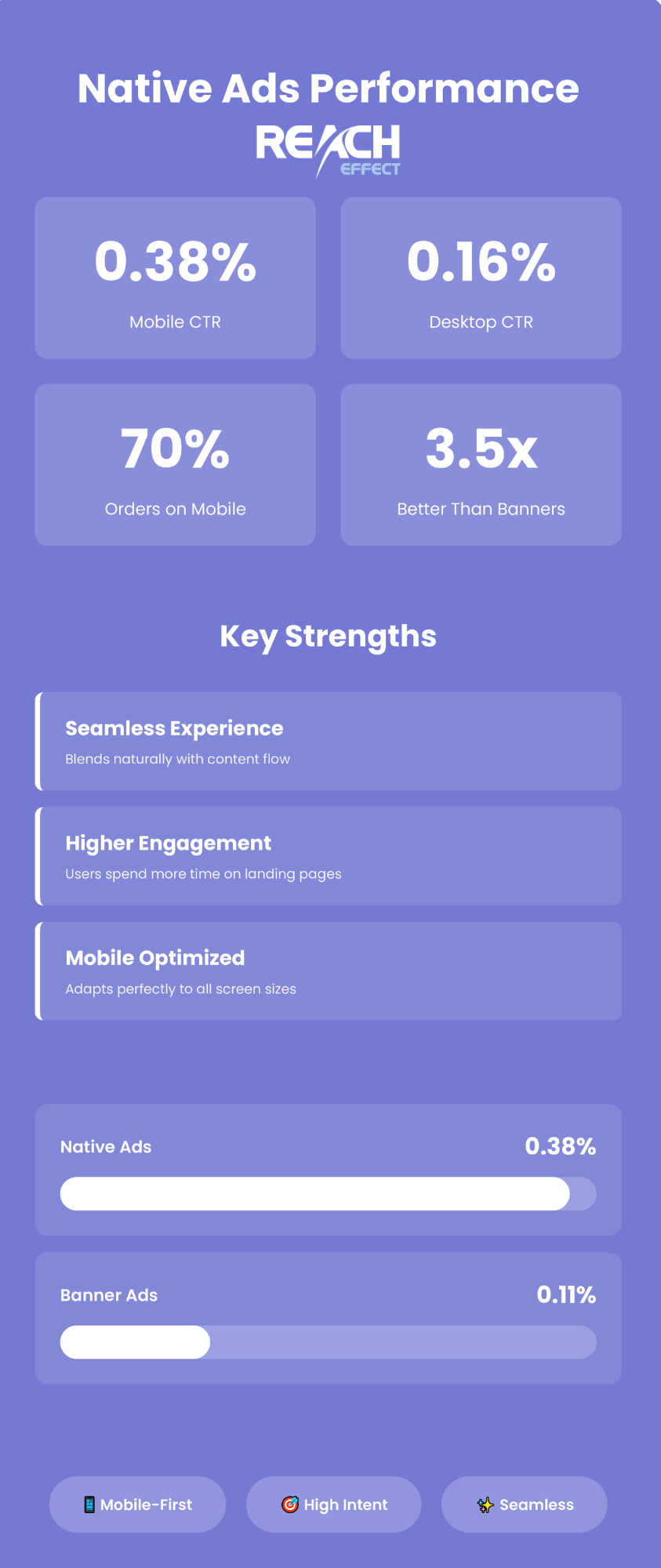
Pop Ads: The High-Volume Approach
Pop ads, specifically popunders that appear behind the active browser window, represent a different philosophy. Instead of blending in, they maximize impression volume by showing ads to every visitor, regardless of their engagement level with your content.
How Pop Ads Perform During Shopping Seasons
Pop ads deliver substantially higher click-through rates compared to traditional display formats. Industry data shows that pop ad CTRs can be six times higher than banner advertising, with conversion rates that make them attractive for affiliate marketers and direct response campaigns.
The economics are compelling too. Popunder ads typically cost less per impression than native ads, with CPM rates starting from $0.50 in Tier 2 and Tier 3 countries and around $1 in Tier 1 markets. During high-traffic periods like Singles Day and Black Friday, this means you can monetize every single visitor profitably.
The Strengths of Pop Advertising
Maximum Impression Volume
Every visitor to your site generates a pop ad impression. During traffic spikes associated with shopping events, this scales beautifully. A site that normally serves 100,000 daily visitors might see 500,000 during Black Friday week. With pop ads, that’s 500,000 monetizable impressions without changing your content structure.
Consistent Revenue Floor
Pop ads provide predictable CPM rates regardless of your content quality or niche. Whether someone lands on your best article or your oldest archived post, the pop ad fires. This creates a reliable revenue floor that native ads can’t match across all page types.
Works Across All Verticals
Unlike native ads that perform variably by vertical, pop ads deliver consistent results across entertainment, utilities, e-commerce, dating, sweepstakes, and other categories. During shopping events when traffic sources diversify dramatically, this consistency matters.
Perfect for Affiliate Campaigns
Pop ads excel at driving traffic to affiliate offers during Singles Day and Black Friday. Since you don’t need to prepare individual creatives for each campaign, you can quickly pivot between offers as deals change throughout the shopping period.
The Limitations of Pop Ads
User Experience Concerns
Let’s be honest: users don’t love pop ads. During high-intent shopping sessions, an unexpected popunder can feel disruptive. Some users with ad blockers won’t see them at all, reducing your effective impression volume.
Brand Safety Considerations
Publishers building premium brands need to consider how pop ads affect their reputation. During shopping events, when you might attract new visitors who could become regular readers, aggressive monetization tactics can hurt long-term growth.
Lower Engagement Quality
While pop ads generate high impression volume, the quality of engagement differs from native ads. Users aren’t actively choosing to view pop ads based on relevance, which can result in lower conversion rates on the advertiser side and potentially lower CPMs over time.
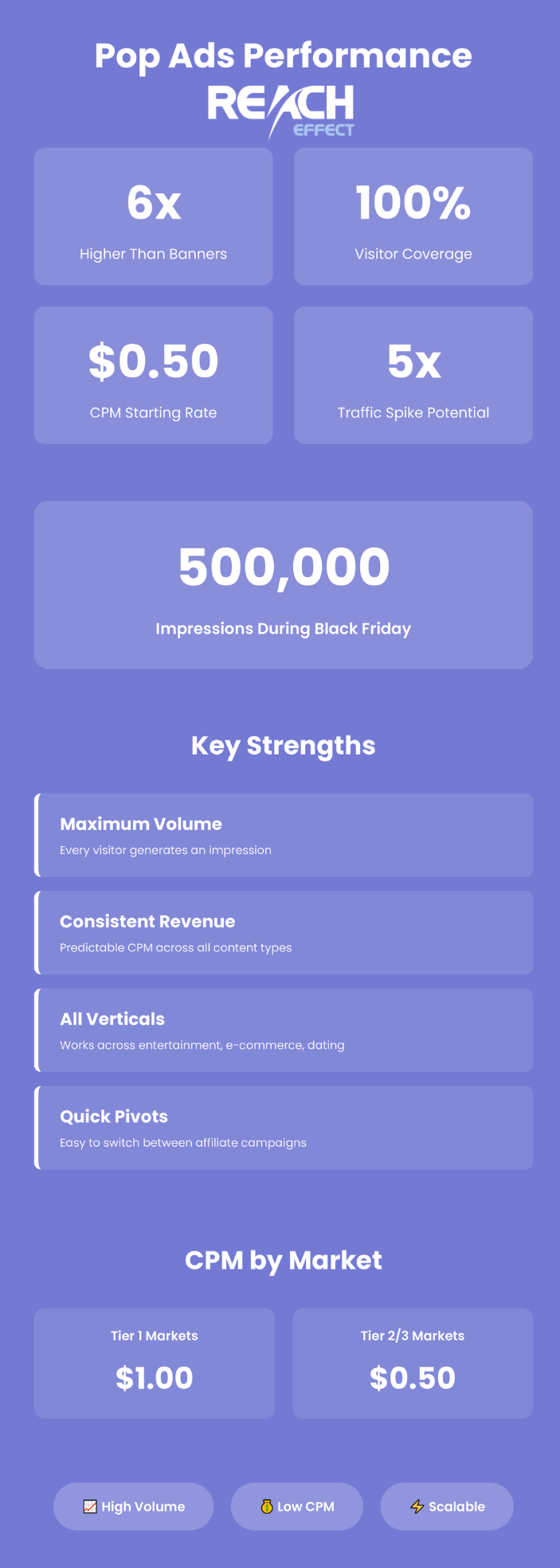
Performance Benchmarks: The Numbers That Matter
Let’s translate all this into practical numbers you can use to forecast revenue during Singles Day and Black Friday.
Native Ad Benchmarks
For a publisher running native ads during shopping events, here’s what realistic performance looks like:
- Desktop CTR: 0.16% to 0.25% (baseline), 0.30% to 0.45% (optimized shopping content)
- Mobile CTR: 0.38% to 0.50% (baseline), 0.55% to 0.75% (optimized shopping content)
- CPM Rates: $2.00 to $8.00 depending on vertical and traffic quality
- Engagement Time: 45 to 90 seconds average on-page time after click
- Best Performing Categories: Beauty (0.104% average CTR), Technology, Fashion, Home Goods
During Singles Day and Black Friday specifically, publishers with shopping-related content report 40% to 60% higher CTRs compared to regular periods. A technology blog that normally achieves 0.40% mobile CTR might see 0.64% during these peak shopping days.
Pop Ad Benchmarks
For publishers running pop ads during the same period:
- Overall CTR: 6x higher than banner ads (baseline comparison)
- CPM Rates: $0.50 to $2.00 depending on GEO and traffic source
- Volume: 100% of visitors generate impressions (minus ad blocker users)
- Best Performing Verticals: E-commerce, Sweepstakes, Utilities, Dating, Gaming
- ROI for Advertisers: 150% to 300% on well-optimized campaigns
The key advantage shows up in volume scaling. A site generating 500,000 daily impressions during Black Friday week with pop ads at $1.50 CPM earns $750 daily, or $5,250 for the week. The same site with native ads limited to 100,000 impressions at $5 CPM earns $500 daily, or $3,500 for the week.
Real-World Scenarios: Which Format Wins?
The honest answer is: it depends on your specific situation. Let me walk you through three publisher profiles to show you how to make this decision.
Scenario 1: Content-Heavy Shopping Blog
You run a gift guide and product review site that publishes 20 to 30 articles weekly. Traffic consists mainly of organic search visitors looking for buying advice during shopping seasons.
Recommendation: Native ads dominate here. Your audience is already in shopping mode, actively reading content about products and deals. Native ads that promote relevant retailers, affiliate offers, or product listings will feel like helpful suggestions rather than interruptions. Expect your revenue to increase 150% to 200% during Singles Day and Black Friday compared to regular months.
Implementation: Place native ad units after the first paragraph, mid-content, and at the end of articles. Use multiple headline variations and test product images versus lifestyle images. Focus on electronics, fashion, and home goods offers during peak shopping days.
Scenario 2: Entertainment and News Site
You run a general interest site covering entertainment news, lifestyle content, and trending topics. Traffic spikes during shopping events as people search for Black Friday coverage and entertainment while shopping online.
Recommendation: Consider a hybrid approach weighted toward pop ads. Your audience isn’t necessarily shopping when they visit, but the traffic volume justifies pop ad implementation. Add native ads to any shopping-specific content you publish during the events.
Implementation: Run pop ads at $1 to $2 CPM to monetize all traffic. Add native ad units to any gift guides, deal roundups, or shopping-related content you create for the season. This captures both volume-based revenue and intent-based engagement.
Scenario 3: Niche Technical or B2B Site
You operate a specialized site covering software development, industry news, or professional tools. Your audience is educated and ad-savvy, and you care deeply about maintaining trust.
Recommendation: Stick with native ads exclusively. Your audience will revolt against pop ads, and the long-term reputation damage isn’t worth short-term revenue gains. Focus on native ads for relevant B2B offers, professional tools, or educational resources.
Implementation: Use native ads sparingly, only on high-value content. Test B2B offers, professional services, and educational platforms. Accept lower overall revenue during shopping events in exchange for maintaining audience trust and engagement quality.
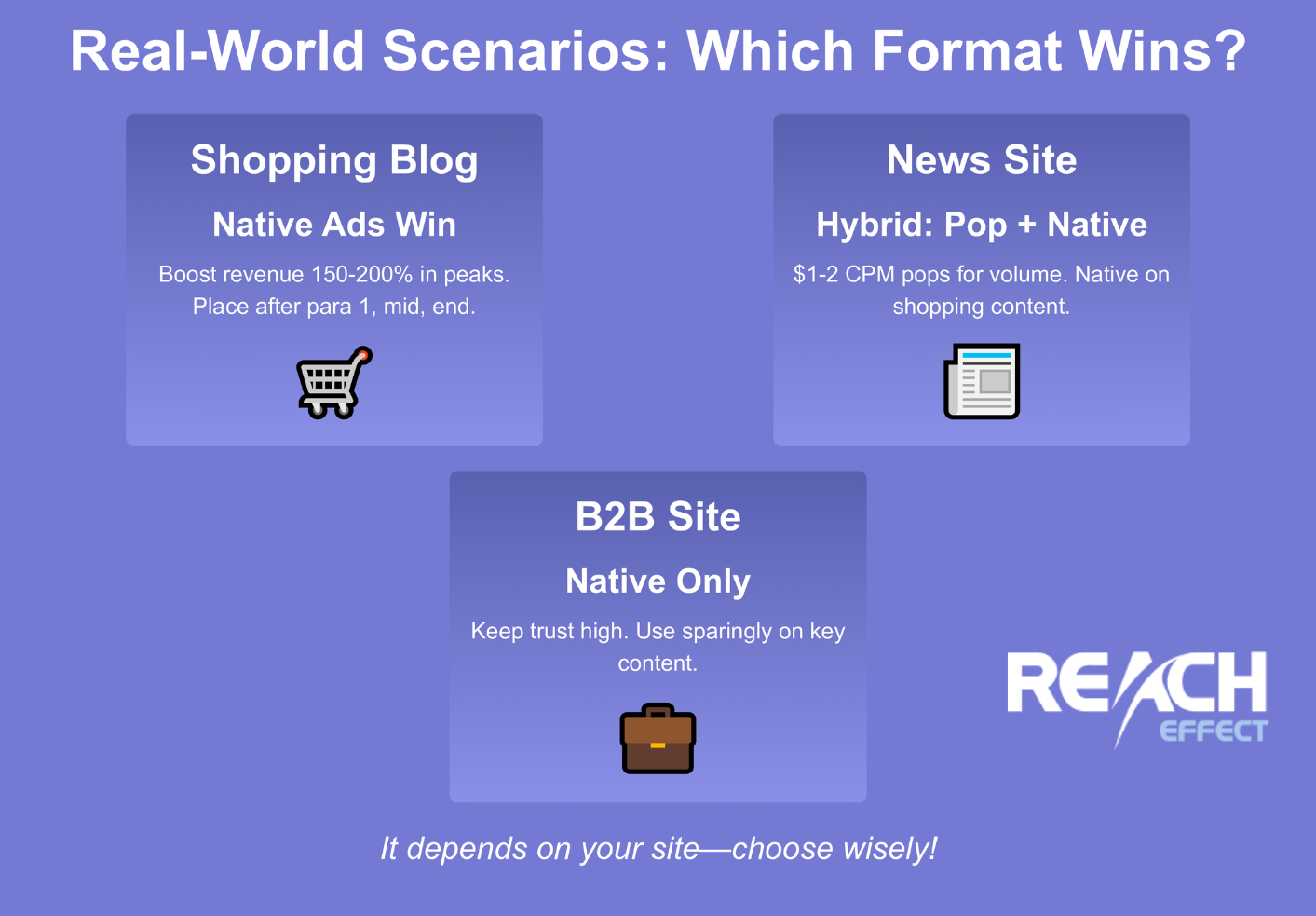
Combining Both Formats: The Hybrid Strategy
Many successful publishers don’t choose between native and pop ads at all. They run both formats strategically to maximize revenue while managing user experience.
The key is segmentation. Here’s how to implement a hybrid approach:
By Traffic Source
- Direct and returning visitors see native ads only (protect your loyal audience)
- Search traffic from commercial keywords sees native ads (high intent)
- Social media and secondary traffic sources see pop ads (one-time visitors)
By Content Type
- Cornerstone content and shopping guides use native ads exclusively
- Older archived content and informational pages run pop ads
- Landing pages from paid traffic run both formats for maximum monetization
By Device
- Mobile traffic runs native ads (where CTRs are highest)
- Desktop traffic runs pop ads (where user tolerance is higher)
By Time of Day
- Peak shopping hours (10 AM to 3 PM, 7 PM to 11 PM) run native ads for quality
- Off-peak hours run pop ads for volume
During Singles Day and Black Friday specifically, consider running both formats at maximum capacity during peak traffic hours. The 48-hour window from Singles Day through Black Friday represents your highest-value inventory of the year. Don’t leave revenue on the table due to format limitations.
Working with Reacheffect for Shopping Event Success
Whether you choose native ads, pop ads, or a hybrid approach, working with a platform that understands shopping event optimization makes all the difference. Reacheffect specializes in helping publishers maximize revenue during these critical periods with both ad formats.
The platform offers real-time bidding that increases during shopping events, ensuring your inventory captures peak CPM rates. Advanced targeting options let you serve different ad formats to different audience segments, implementing the hybrid strategies I described earlier.
Most importantly, Reacheffect’s optimization algorithms automatically adjust ad delivery based on performance data, maximizing your revenue without constant manual intervention.
Advertise With The Reacheffect Ad Network
Get TrafficMaking Your Decision: A Framework
Here’s a practical framework to choose your ad format strategy for Singles Day and Black Friday:
Choose Native Ads If:
- Your content directly relates to shopping, gifts, or product recommendations
- You have a loyal returning audience you want to protect
- Your site has strong domain authority and premium advertiser demand
- Mobile traffic represents more than 60% of your total traffic
- You’re willing to accept lower impression volume for higher engagement quality
Choose Pop Ads If:
- You prioritize maximum impression volume over engagement depth
- Your content is general interest rather than shopping-specific
- You have large traffic spikes from social media or viral sources
- You operate in verticals where native ads underperform
- You need consistent revenue across all content types and traffic sources
Choose Hybrid Approach If:
- You have sophisticated audience segmentation capabilities
- Your site has diverse content types and traffic sources
- You want to maximize total revenue during shopping events
- You can manage multiple optimization campaigns simultaneously
- You’re willing to invest time in strategic format deployment
Final Thoughts
Singles Day and Black Friday represent the Super Bowl of publisher monetization. The decisions you make about ad formats directly impact your annual revenue in meaningful ways. A publisher earning $50,000 annually might generate $15,000 to $20,000 during these three weeks alone with the right strategy.
Start planning your Singles Day and Black Friday strategy now. Test both formats if you haven’t already. Analyze your traffic patterns from previous years. Model different scenarios with realistic CPM and CTR benchmarks. And remember that the publishers who succeed during shopping events are the ones who optimize continuously, not just those who set and forget their ad implementation.


